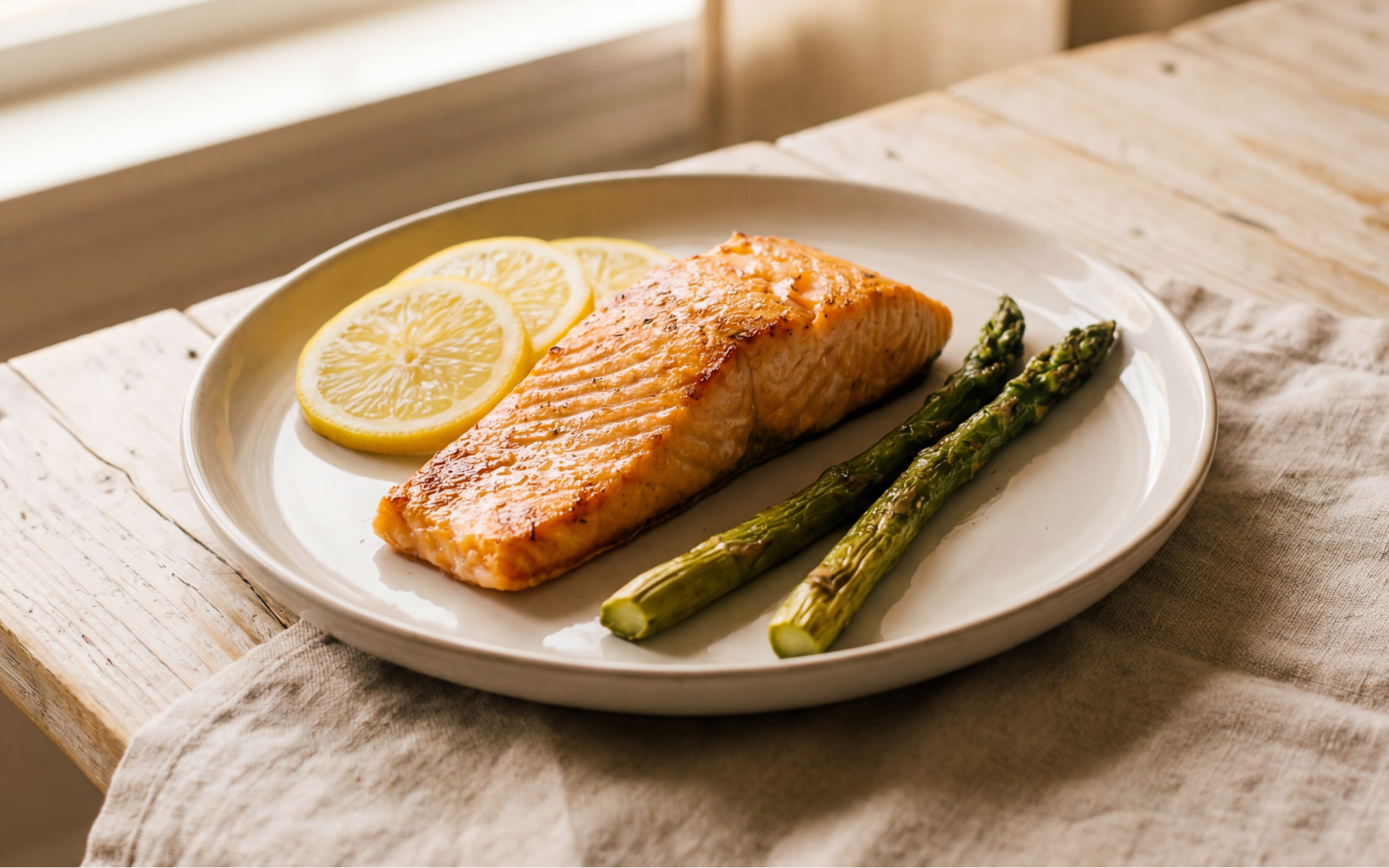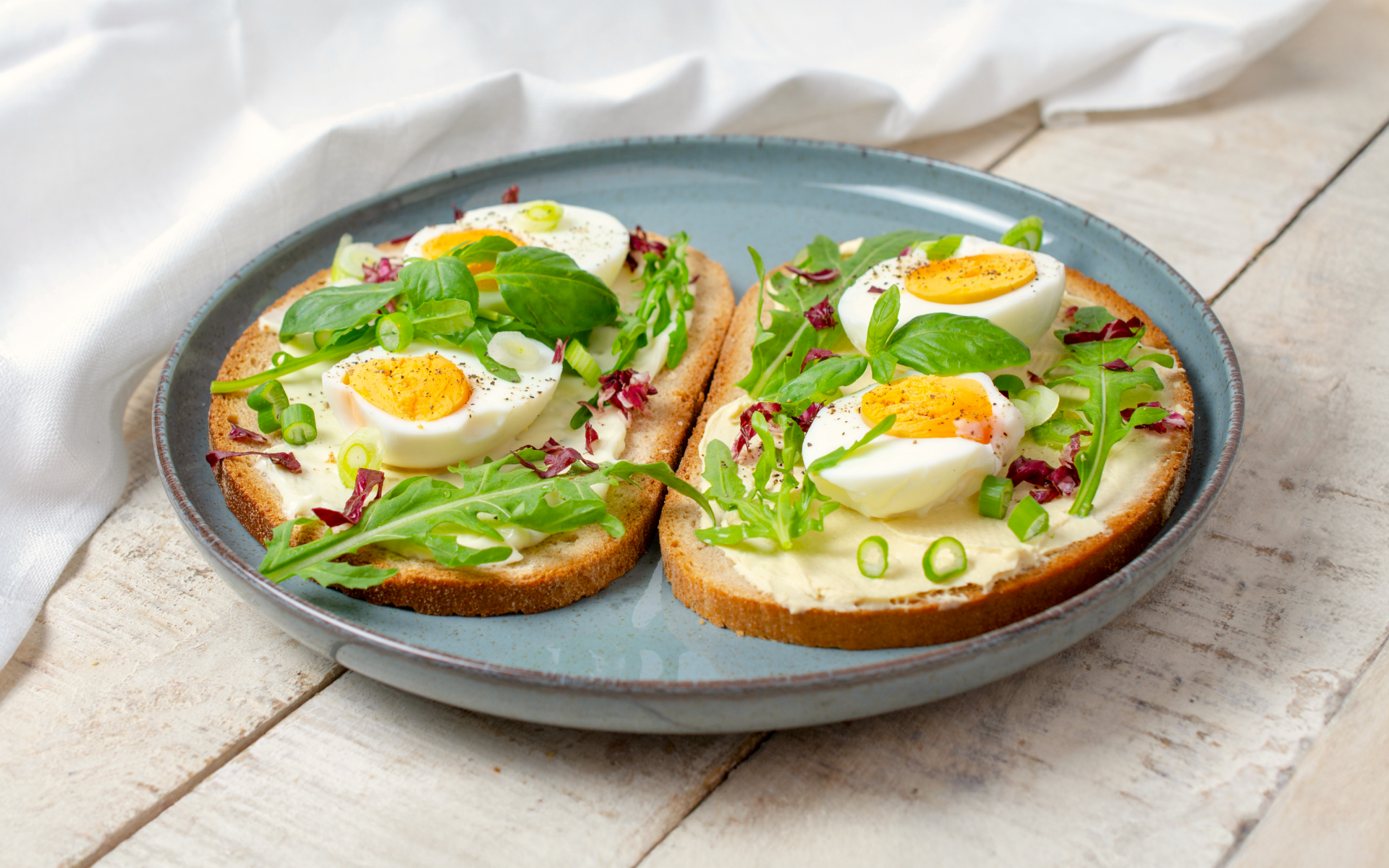When it comes to healthy eating, you may sometimes hear people offering the advice that we should ‘eat like our ancestors’ or stating that ‘traditional diets are better than modern diets’.
While such statements may raise your eyebrows a bit in skepticism, a deeper look into the matter may show you that perhaps these statements are worth paying attention to. If you’ve been interested in traditional foods/diets, then the ancient Greek diet may be something for you to consider.
Read on to learn more about this eating plan, some ancient Greek food facts, and how switching from the modern diet to incorporating some ancient Greek diet recipes into your weekly food plan may improve your well-being.
What Is an Ancient Greek Diet?
This is a meal plan that mimics what people in ancient Greece would eat throughout the day. Such a meal plan seeks to deviate from what we modern people consume today in the hope that eating as ancient Greeks did can improve our health.
Why Choose to Partake In an Ancient Greek Diet Plan?
It could be said that it’s simply for the hope that by moving away from the types of meals and foods we consume today, we may have a better chance of living healthier, disease free lives.
An article by the McGill University argues that traditional foods have benefits over modern foods as they generally contain fewer calories and less saturated fats with more lean meats and fish, which are excellent sources of important nutrients (1).
In a study published in 2019, researchers suggested that traditional eating has been related to positive health outcomes and sustainability, although there is no consensus on what constitutes traditional or modern eating (2).
Another study published in 2023 stated that traditional foods are a source of vital nutrients as they’re rich in vitamins, minerals, antioxidants, and dietary fiber, which contribute to overall health and well-being (3).
By switching to more traditional diets or simply incorporating more of these foods into the normal modern diet, we can promote healthier eating patterns and prevent diet-related health problems. This is because traditional eating patterns have been associated with reduced risks of chronic diseases, such as heart disease, diabetes, and obesity (3).
Read more: Calorie Deficit Diet Plan To Lose Weight
What Food Did the Ancient Greeks Eat?
According to an older study the ordinary people in Greece during the classical period survived on a diet of cereals, pulses, vegetables, fruit, olive oil, milk, cheese, and a little fish and meat (4). However, according to Britannica, seafood was part of the staple diet of the ordinary Greek people, who also ate bread and olives and spared meat for special occasions as it was considered a luxury ingredient (5).
It should be noted that not all ancient Greeks and Romans abstained from the consumption of meat only due to the cost of it (6).
Some ancient Greek philosophers and ordinary people are said to have abstained from the consumption of meat and adopted vegetarianism simply due to religious beliefs and teachings. Some also avoided the consumption of meat as they associated it with decadence and war (6).
What Are the Five Main Foods in an Ancient Greek Diet?
As seen above, the ancient Greek diet meal plan had an emphasis on plant-based foods. Vegetables, grains, legumes, olive oil, and fruits can be considered the main staple foods of this diet as they were the most easily available and affordable foods to the public.
While some may consider fish and other seafood as a staple food of this diet, most of the people who were able to consume them were those who lived by the coast and those who lived on the Greek islands. People inland were less likely to consume fish.
If you wish to free yourself from all the extra pounds that have been weighing you down for way too long, start using the BetterMe: Health Coaching app and overhaul your entire life!
Here are examples of foods that could be found in each category:
Vegetables
Most vegetables were consumed fresh, although some preservation methods were also used. The varieties that were most common at the time included:
- Leafy vegetables such as chard, romaine lettuce, beetroot leaves, cabbage, arugula, and dandelion greens
- Tubers and root vegetables such as carrots, turnips, onions, and garlic
- Other vegetables such as cucumbers, squash, asparagus, fennel, and artichoke thistle.
Fruits
Olives were perhaps the most popular fruit in the ancient Greek diet. However, the people also ate a variety of other fruits such as figs, bergamot oranges, apples, pomegranates, pears, and jujubes. The ancient Greek people were also said to have dried fruits as a means of preservation – these dried fruits were also often consumed as dessert.
Legumes and Nuts
As meat wasn’t a regular part of the ancient Greek diet and fish/seafood wasn’t readily available in areas far from the coast, the majority of the people got their protein from plant-based sources. Legumes such as beans, lentils, and chickpeas acted as the main source of protein for a large portion of the population.
Nuts such as almonds, walnuts, chestnuts, and pistachios also provided a source of plant-based protein and healthy fats to the people. As with dried fruits, nuts were also consumed as dessert.
Olive Oil
Due to the abundance of olive trees and olives in ancient Greece, olive oil was a staple food for the people.
According to an opinion article published in Frontiers In Nutrition in 2022, olive oil was used in almost all traditional Greek cuisine and it was used so much that authors have described the food of the time as ‘swimming in oil’ (7).
From cooking to dressing to flavorings, olive oil was found everywhere in the basic ancient Greek diet meal plan.
Grains
Wheat and barley were the two main grains in this diet. They were often used to make porridge and bread, which was eaten during all meals and could be considered as a staple food of the ancient Greek diet (5, 7). Millet was also sometimes used to make unleavened bread.
Other Foods
In addition to these 5 main staples, the ancient Greeks also consumed:
- Meat and milk from domesticated goats. The milk was also used to make cheese. Hunting was also allowed, so game meats found their way to the dinner table. Wealthier ancient Greeks are also said to have kept sheep and pigs which they slaughtered for meat.
- Chickens, quails, and geese were also raised and provided eggs and meat.
- Fish and other seafood – As stated, fish was a staple food, but largely in coastal regions and the Greek islands. Those who lived inland didn’t have much opportunity to enjoy seafood.
- Herbs and flavorings – No Greek cuisine, whether ancient or modern, would be complete without the use of herbs. The most common ones used during ancient times were oregano, garlic, thyme, dill, mustard, and fennel. Vinegar and olive oil were also used as flavorings
- Water, wine, and honey – Honey was used to add flavor to baked goods and to make honey mead. Wine has been part of the Greek diet since the ancient days – check out the Mediterranean diet food list to see how wine is one of the beverages allowed in this healthy diet plan.
What Did Ancient Greeks Eat for Dessert?
Ancient Greeks often consumed nuts and fresh and dried fruits for dessert.
Did Ancient Greeks Eat One Meal a Day?
No, they didn’t. While the OMAD diet may be popular today as a weight loss diet, it wasn’t something the ancient Greeks did as part of their culture.
So how many meals a day in the ancient Greek diet?
The ancient Greeks are said to have eaten 3 meals in a day: breakfast aka acratisma, lunch aka arison, and dinner which was considered the main meal of the day and known as deipnon (8).
What Is a Typical Lunch in an Ancient Greek Diet?
All ancient Greek meals that were eaten during the day were quite different from what we eat today. Here’s what these people ate for the 3 main meals of the day (8):
Breakfast
The lightest meal of the day that consisted of bread dipped in wine. If the bread and wine didn’t seem appetizing on some mornings, people would switch to teganites, a type of pancake made from wheat flour, olive oil, curdled milk, and honey, which was topped with honey or cheese.
Sometimes they also ate whatever food that was leftover from the previous night, which could mean some fruit and yogurt. Check out our article on Greek yogurt benefits for weight loss to see why you should consider consuming yogurt as part of your breakfast.
Lunch
The midday meal was also rather light, but not as light as breakfast. This meal is said to have consisted of bread and some legumes, eggs, olives, cheese, nuts, fruit, or vegetables. Those with access to fish could also have some during this meal. Lunch was often eaten at midday.
Dinner
Considered the most important meal of the day, it was also the largest meal of the day. This meal was served at sundown after the day’s work and people (of the same gender) would gather together and eat in a social group. As this was the largest meal, the table is said to have been laden with an assortment of dishes. Wine was also consumed at dinner and those who wanted dessert could have it after the meal was done.
BetterMe will shake off your mental funk, rid you of your energy-zapping habits, and help you sculpt the body of your dreams. Intrigued? Hurry up and change your life for the better!
Why Are Greek People So Healthy?
This could largely be attributed to the Greek diet, or the Mediterranean diet as it could be considered a version of it.
In an older study published in The Journal of Nutrition in 2001, researchers found that the traditional Greek diet (anything before the 1960s) had a high intake of fruits, vegetables (particularly wild plants), nuts, and cereals mostly in the form of sourdough bread rather than pasta.
The diet also had more olive oil and olives; less milk but more cheese; more fish; less meat; and moderate amounts of wine, more so than other Mediterranean countries. Researchers stated that this diet may have contributed to the lower death rates and longer life expectancy in Greece (9).
The diet eaten in Greece also shares many commonalities with the popular Mediterranean diet. According to a study published in 2016, this eating plan is based on the consumption of minimally processed plant foods, including fruits, vegetables, whole grains, legumes, nuts, and seeds.
Read more: Plant-Based Diet Meals: Simple Examples, Benefits, Potential Side Effects & More
Researchers stated that eating like this promotes good health, a healthy body weight, and disease prevention. They also said that foods in the Mediterranean diet are rich in polyphenols. These plant compounds are believed to help reduce the risk of neurodegenerative diseases, diabetes, cardiovascular disease, hypertension, obesity, and early death from all causes (10).
A newer study comparing today’s Mediterranean diet in Greece versus the traditional Greek diet found that the modern Mediterranean diet has a higher intake of meat, cereals, alcoholic and nonalcoholic beverages, and sugar products compared to the traditional version that concentrated on the intake of more vegetables, fruits, legumes, dairy, fish, and healthy fats, mainly from olive oil (11). The authors suggested that this shift in eating patterns could have potential health consequences.
If you’d like to be healthy like the Greeks, following the traditional Greek diet is likely better than the more modern version. To learn more about the ins and outs of this eating plan, take a look at our article on the Mediterranean diet meal plan.
What Is a Greek Warrior Diet Plan?
This is a meal plan that aims to follow how the Spartans ate. Unfortunately, there is no single consensus on how many times or how exactly the warriors ate. Some say that they ate very little, not necessarily under-eating but also being careful not to indulge.
Others say that the warriors would go for extended periods of fasting or undereating and then indulge in a feast later in the day, usually at dinner time. This would be similar to the OMAD diet. However, other sources claim that the warriors ate as normal, eating whole grains, vegetables, fruit, and bread, but paid more attention to protein above all else.
A point to note is that not only is the information on this so-called Greek warrior diet quite confusing, there’s also no scientific research that gives any facts on it. Therefore, we would advise you not to try it.
Yes, but only really poor people. According to Britannica, while ancient Greeks and Romans knew that oats were edible, they didn’t generally consume them and instead fed them to animals and peasants (12). As stated above, the information on what and how the Spartans ate is quite contradictory. One claim seems to be that they generally ate less than what the rest of the population did, but even this is disputed. While traditional ancient Greek breakfasts didn’t typically include eggs, today, you can find many Greek breakfast recipes that include eggs. Many cooking blogs describe Greek coffee as being quite similar to Turkish coffee. It’s simply made by boiling fine-ground coffee in water and allowing the grounds to sink. As it’s quite bitter, many people add sugar and some drink it black with a cup of plain water on the side.Frequently Asked Questions
Did Greeks eat oatmeal?
Did Spartans eat healthily?
Do Greeks eat eggs for breakfast?
How do the Greeks drink coffee?
The Bottom Line
The ancient Greek diet is certainly quite different from what many of us eat today. If you’d like to eat like the ancient Greeks, the first step is to get rid of most of the highly processed foods in your fridge/pantry and replace them with whole foods. Make sure to eat vegetables, fruit, whole grains, and legumes and drink water. You can also try to find out your recommended calorie intake as this could help prevent overeating.
DISCLAIMER:
This article is intended for general informational purposes only and does not serve to address individual circumstances. It is not a substitute for professional advice or help and should not be relied on for making any kind of decision-making. Any action taken as a direct or indirect result of the information in this article is entirely at your own risk and is your sole responsibility.
BetterMe, its content staff, and its medical advisors accept no responsibility for inaccuracies, errors, misstatements, inconsistencies, or omissions and specifically disclaim any liability, loss or risk, personal, professional or otherwise, which may be incurred as a consequence, directly or indirectly, of the use and/or application of any content.
You should always seek the advice of your physician or other qualified health provider with any questions you may have regarding a medical condition or your specific situation. Never disregard professional medical advice or delay seeking it because of BetterMe content. If you suspect or think you may have a medical emergency, call your doctor.
SOURCES:
- Benefits of Traditional Foods (n.d., mcgill.ca)
- Understanding traditional and modern eating: the TEP10 framework (2019, bmcpublichealth.biomedcentral.com)
- Embracing Tradition: The Vital Role of Traditional Foods in Achieving Nutrition Security (2023, ncbi.nlm.nih.gov)
- Diet of the classical period of Greece and Rome (1989, pubmed.ncbi.nlm.nih.gov)
- Daily life and social customs (2024, britannica.com)
- The Hidden History of Greco-Roman Vegetarianism (n.d., britannica.com)
- Olive oil, Greek Mediterranean diet heritage and honoring the past to secure our future: Priorities for research and education (2022, frontiersin.org)
- Ancient Greek Food: Bread, Seafood, Fruits, and More! (2024, historycooperative.org)
- The Mediterranean Diets: What Is So Special about the Diet of Greece? The Scientific Evidence (2001, sciencedirect.com)
- Diet Quality—The Greeks Had It Right! (2016, ncbi.nlm.nih.gov)
- Today’s Mediterranean Diet in Greece: Findings from the National Health and Nutrition Survey—HYDRIA (2013–2014) (2022, ncbi.nlm.nih.gov)
- Oatmeal (2024, britannica.com)










